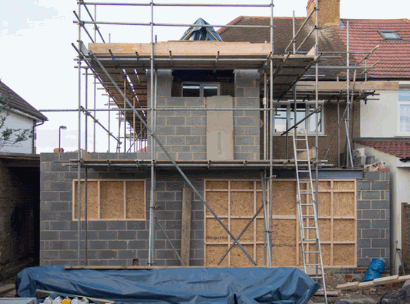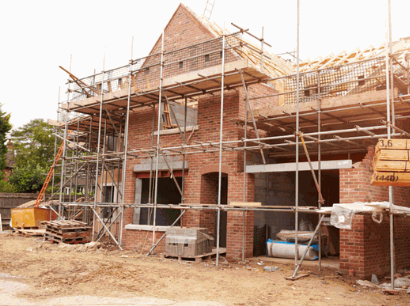People have scaffolding erected around their homes for many reasons: maybe you're planning home renovations, which can be an exciting time. Perhaps you're having essential maintenance work on your roof, and this is maybe a little more stressful, but necessary.
You could even be having your exterior walls cleaned, or some new lighting fitted, or maybe even a loft extension – each project has its own challenges, but the end result is going to be an improvement.
So, you want it sorted out as quickly as possible. You want the mess, noise, and upheaval over and done with, which means getting that scaffolding up ASAP!
However, navigating the legalities surrounding scaffolding and neighbourly relations can be a bit daunting. This Scaffold Crew guide explores your rights and options when it comes to erecting scaffolding for your project.

Unfortunately, under the current scaffolding law (UK), neighbours have the right to refuse to permit access to their property for the purpose of erecting scaffolding. This can present a challenge, especially if your project requires scaffolding to directly affect a shared wall.
However, with a bit of careful handling, there could be a way around the problem...
Discover: How Long Can Scaffolding Be Left Up

Here are some ideas to help you through this potentially difficult process...
This is the ideal scenario! If your project allows, explore ways to design the scaffolding to stand entirely on your own land. This eliminates the need to involve another property owner or navigate legalities. Here are some things to consider:

If your project necessitates scaffolding that needs to "encroach" on a shared wall, the Party Wall Act (1996) comes into play. This act protects both you and your neighbour by establishing a formal framework for undertaking work that could potentially affect a shared structure. Here's what you need to know:
Even if your project doesn't require you to gain access to your neighbour's property, open communication is crucial for maintaining a positive relationship. Here are some ways to foster goodwill:
By exploring these options and fostering open communication with your neighbour, you can ensure your renovation project runs smoothly while maintaining a positive relationship with them.
If discussions with your neighbour prove unsuccessful, legal options exist, but they should be considered a last resort:
Check out: Is It Illegal To Work On A Roof Without Scaffolding
All of this is good to know if you're on the other side of the fence, asking; "Can my neighbour erect scaffolding on my land?"
This blog equips you with all the information you need, and you can use this to (hopefully!) reach an amicable solution that helps both parties.

While navigating scaffolding rights and neighbourly relations can seem complex, remember:
By following these tips and seeking professional guidance from builders and surveyors if needed, you can ensure your dream renovation progresses smoothly and maintains a positive relationship with your neighbour.
If you need any further advice, please call the expert team at the Scaffold Crew and we'll guide you through the process!




